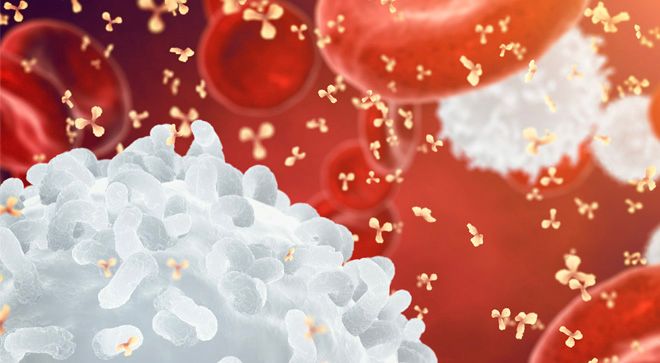Article
Patients With Previously Treated Multiple B-Cell Malignancies Respond Safely to Next-Generation BTK Inhibitor
Author(s):
Pirtobrutinib was safe and effective in treating patients with chronic lymphocytic leukemia, small lymphocytic lymphoma, mantle cell lymphoma and Waldenstrom macroglobulinemia, some of whom developed intolerance or resistance to previous covalent BTK inhibitors.
Treatment with the next-generation covalent BTK inhibitor pirtobrutinib was safe for multiple B-cell malignancies including patients with chronic lymphocytic leukemia, small lymphocytic lymphoma, mantle cell lymphoma and Waldenstrom macroglobulinemia, according to data published in The Lancet.
The benefit observed with pirtobrutinib was also seen in patients who were previously treated with a covalent BTK inhibitor, according to the phase 1/2 BRUIN study.
“In this first-in-human trial of pirtobrutinib, we showed promising efficacy and safety in patients with B-cell malignancies, including (chronic lymphocytic leukemia) or (small lymphocytic lymphoma), (mantle cell lymphoma), Waldenstrom macroglobulinemia and follicular lymphoma,” the study authors wrote. “Activity was observed in heavily pretreated patients, including patients with resistance and intolerance to previous covalent BTK inhibitor treatment.”
Covalent BTK inhibitors have previously been shown to be effective in treating patients with B-cell malignancies, although treatment failure can occur as a patient develops an intolerance or resistance through long-term use of the drug. For example, the most common reason for resistance to covalent BTK inhibitor is BTK C481 mutations for patients with chronic lymphocytic leukemia. Pirtobrutinib is an oral, highly selective, reversible BTK inhibitor that is currently being developed to potentially address this unmet need.
Researchers addressed the safety and efficacy of pirtobrutinib in 323 patients (median age, 68 years; 34% women) with B-cell malignancies who received at least two previous lines of therapy. Of these patients, 170 had chronic lymphocytic leukemia or small lymphocytic lymphoma, 61 patients had mantle cell lymphoma, 26 patients had Waldenstrom macroglobulinemia and 66 patients had other B-cell lymphomas.
Patients received pirtobrutinib orally once per day in 28-day cycles. Seven dose levels were administered to determine the recommended dose: 25 mg, 50 mg, 100 mg, 150 mg, 200 mg, 250 mg and 300 mg. Patients received treatment until unacceptable toxicity, disease progression or study withdrawal. Outcomes of interest included overall response rate (percentage of patients with partial or complete response to treatment) and the maximum tolerated dose of pirtobrutinib.
Throughout the study, there were no toxicities observed that were serious enough to prevent a dose increase. Researchers determined that the recommended dose for the phase 2 study was 200 mg daily.
Side effects occurred in at least 10% of patients, which included diarrhea (17%), fatigue (20%) and bruising (13%). The most common severe or life-threatening side effect was neutropenia, or a low level of a type of white blood cell called neutrophils (10%). There was no association between treatment with pirtobrutinib and how often severe or life-threatening side effects occurred. Patients did not experience any severe heart rhythm abnormalities, and one patient had a severe hemorrhage that occurred during a bicycle accident. One percent of patients discontinued treatment because of a side effect related to pirtobrutinib.
Researchers were able to evaluate efficacy in 121 patients with chronic lymphocytic leukemia or small lymphocytic lymphoma who were previously treated with a covalent BTK inhibitor. The overall response rate for these patients was 62%. The rate was similar in patients with chronic lymphocytic leukemia with previous covalent BTK inhibitor resistance (67%), BTK C481-mutation (71%), covalent BTK inhibitor intolerance (52%) and BTK wild-type disease (involving a gene found in a natural, unmutated form; 66%).
The overall response rate was also assessed in 52 patients with mantle cell lymphoma who were previously treated with covalent BTK inhibitors. In these patients, the overall response rate was 52%.
Most of the 117 patients with chronic lymphocytic leukemia, small lymphocytic lymphoma or mantle cell lymphoma who responded to pirtobrutinib did not have disease progression to date, although eight patients did experience disease progression.
“Given the long natural history of some B-cell malignancies, in particular (chronic lymphocytic leukemia), longer follow-up is needed to better estimate the durability of pirtobrutinib responses,” the study authors wrote. “Additionally, although the safety profile of pirtobrutinib is encouraging, longer follow-up will be needed to better understand the full safety profile of this agent associated with chronic administration.”
For more news on cancer updates, research and education, don’t forget to subscribe to CURE®’s newsletters here.




